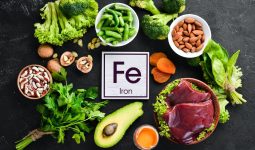Rodents belong to the order Rodentia in the animal kingdom. Numbering over 2000 species, they are mammals characterized by upper and lower pairs of continuously growing incisors.
Nearly half of the mammalian group of the animal kingdom consists of rodents. Rodents can be found in every region of the world except New Zealand, Antarctica, a few areas of the Arctic region, and some pacific islands – although a few have been introduced to those places due to human intervention.
Most rodents are small animals with short limbs, robust bodies, and long tails. The largest rodent in the world is the Capybara (Hydrochoerus hydrochaeris), a South American rodent the size of a Labrador.
Their sharp teeth are used to gnaw on food, excavate burrows and defend themselves from attack. Rodents have a varied diet, some feed on plant material, seeds, and even insects and other small animals.
Most rodents are social animals, with many species living in societies with sophisticated communication systems. Among rodents, mating typically involves monogamy, polygamy, or even promiscuity.
Examples of rodents include rats, mice, squirrels, chipmunks, hamsters, capybaras, hares, rabbits, gerbils, guinea pigs, porcupines, chinchillas, pikas, and prairie dogs.
In the 56 million years that rodents have existed on earth, they have had both good and bad effects on humans and the environment.
Several species of rodents, like woodchucks, cane rats, bamboo rats, pacas, and capybaras, have been a source of food fur indigenous people.
Fur from chinchillas and nutria have been used to make clothes. Guinea pigs, mice, and rats have been used as laboratory animals in genetic and biomedical research.
Some rodents like hamsters, gerbils, are a favorite choice for household pests. However, some would argue that these benefits cannot be compared to the harmful effects of rodents.
For example, the Bubonic plagues, caused by bacterium Yersinium persis, were some of the most devastating pandemics in the history of humankind, eliminating nearly half the population of the known world.
It resulted from the bite of a flea carried around by rats in the medieval period. Other diseases for which rodents are vectors include rat-bite fever, Lassa fever, tularemia, murine typhus, scrub typhus, and Rocky Mountain spotted fever.
Rodents have long been associated with humans. Rats and mice are ubiquitous in large, sprawling cities where humans have inadvertently provided these rodents with food and shelter, adapting themselves with the behavioral habits and living conditions of humans.
They are also responsible for the economic damage of agricultural produce. For instance, stored food is contaminated by rodent waste, crops are damaged before harvest, reservoirs leak from burrowing, and farming implements are destroyed by gnawing.
It is for these reasons that rodents should be controlled, and if possible, eliminated
Rodenticides
Rodenticides, generally known as rat poisons, are pesticides used to the control and elimination of rodents.
They are non-specific toxic substances manufactured for the singular purpose of killing rodents. Some rodenticides have lethal effects immediately rodents get in contact with it, while others require repeated exposure to it.
Perhaps due to their inability to vomit, rodents are less likely to gorge on unknown food. They would instead sample and wait to see if others are negatively affected.
Types of Rodenticides
Anticoagulants
These are anticoagulants that cause death in rodents by blocking the vitamin K cycle, which results in the inability of blood to clot. Anticoagulants are divided into:
- Chronic anticoagulants: These cause death one to two weeks after the ingestion of lethal dose.
- Single-dose
- Multiple-dose
Also, massive doses of anticoagulants like indanndione and 4-thiochromenone cause damage by disrupting the tiny blood vessels and increasing their permeability.
This effects gradually develop over several days until it gets to the final phase of intoxication. At this stage, the rodent collapses from hemorrhagic shock or anemia and dies.
First-generation anticoagulants usually have a shorter half-life and require a high dosage taken consecutively over a number of days to damage the system of the rodent effectively. Examples include coumatetralyl and warfarin.
On the other hand, second-generation anticoagulants are far more toxic. Their use is typically employed in lower concentrations and is lethal after a single dosage.
Second-generation anticoagulants are deadly for rodents that have become resistant to first-generation anticoagulants. Examples of these are brodifacoum, bromadiolone, and difenacoum.
Cholecalciferol
Vitamin D3, also known as cholecalciferol, helps the body maintain optimum balance by enhancing the absorption of calcium from the gut and kidneys.
Cholecalciferol is toxic to rodents the same way it is beneficial to humans. They were first registered in the United States in 1984 as a rodenticide.
The ingestion of a lethal dose of cholecalciferol can cause effects on the body of the rodent. Too much calcium in the blood can affect the gastrointestinal tract, cardiovascular system, central nervous system, muscles, and the kidneys.
This causes the body to become overwhelmed by the toxic effects of too much calcium. A single dose is sometimes considered lethal to most rodents.
Cholecalciferol works in combination with anticoagulants to create a deadly toxic effect in rodents.
Metal Phosphides
Metal phosphides eliminate rodents by creating a deadly phosphine gas when it comes in contact with acids in their digestive system.
Death of the rodent after ingestion occurs within 1-3 days. This method of rodent control can be used in places where rodents have become resistant to anticoagulants.
The metal phosphides are placed in areas that are easily accessible by rats and mice. Examples of metal phosphides include:
- Zinc phosphide
- Aluminum phosphide
- Magnesium phosphide
- Calcium phosphide
Effects of Rodenticides
The application of rodenticides in the control of pests like rats and mice poses a risk to wildlife and the environment. Rodenticides contain toxic active ingredients that can cause severe damage to non-target animals, pets, and even people.
Due to their toxicity and weak standards of safety for their use and distribution, these pesticides may cause damage to anything that may unintentionally consume them.
Second-generation anticoagulants are particularly dangerous due to their fast acting toxic effects. Animals that compete with rodents for food may be affected by primary poisoning when they inadvertently consume food contaminated with rodenticides.
Bioaccumulation up the food chain occurs by secondary poisoning. Cases of secondary poisoning are disastrous to animals like foxes, owls, hawks, and mountain lions that prey on contaminated rodents.
Even humans – particularly children – and domestic animals suffer when they come in contact with rodenticides. Strict regulation on the use of these chemicals ensures that these potential hazards are averted.








